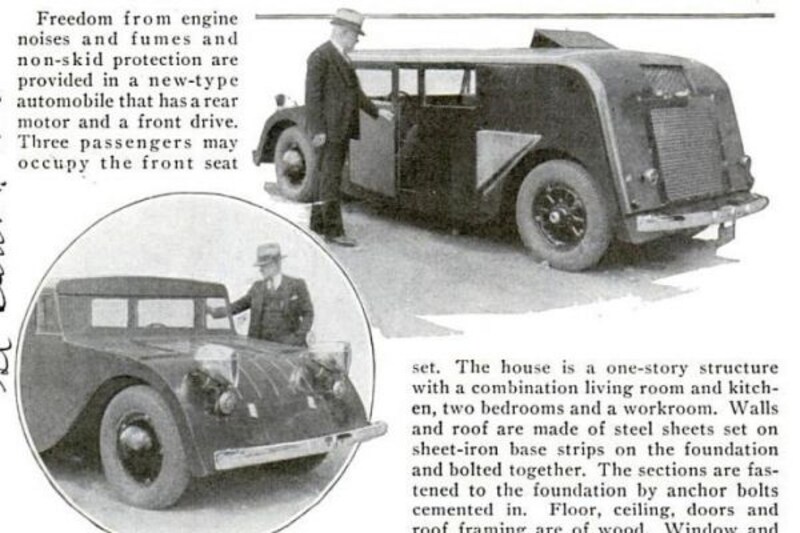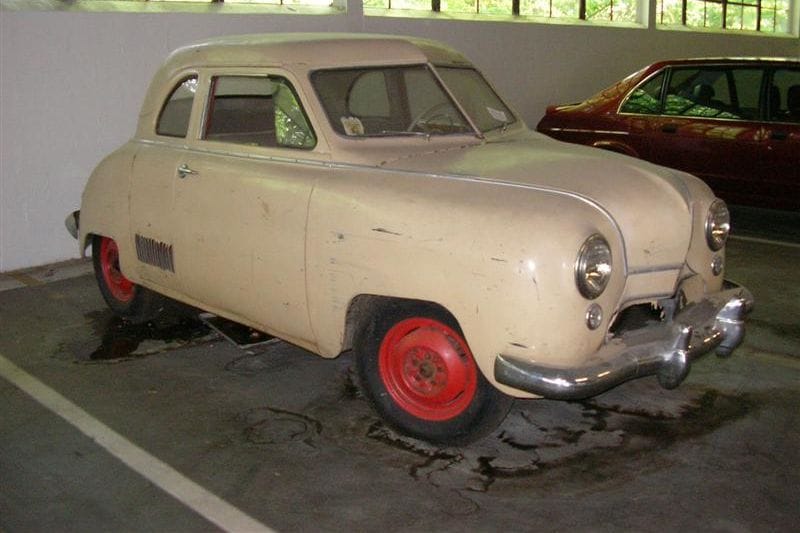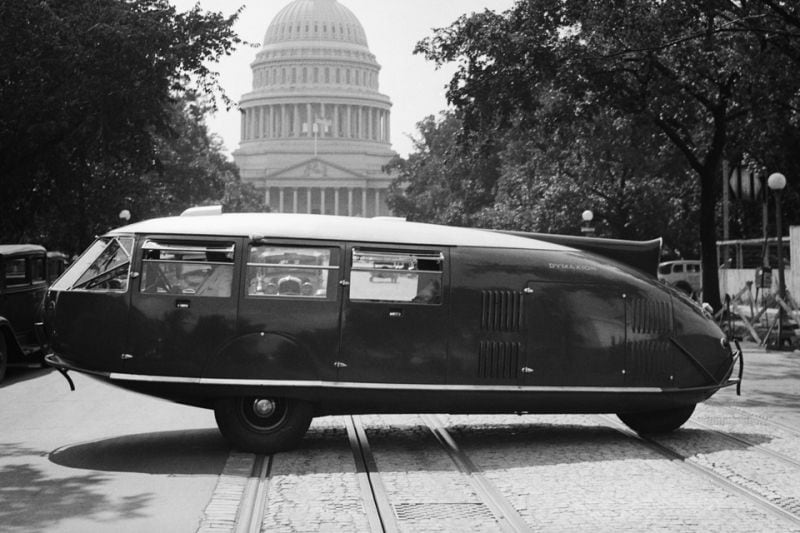Front-engined cars have front-wheel, rear-wheel or four-wheel drive. If the engine is in the rear, only the last two drive types are applicable. However? Not quite, because there have also been attempts to market cars with the rear engine and, yes, front-wheel drive. In this edition of De Vlucht Strip we pay attention to that rather bizarre concept.
Name one car that has the rear engine and front-wheel drive. The chances are slim that you will succeed. That is because no major car manufacturer has ever brought this concept to the market. On front-engined cars, it pays to mount a drive shaft to the rear as it generally improves handling and weight distribution. If you do it the other way around, you will have to deal with the adverse effects of the rear engine on the weight distribution – which Porsche only really mastered after a long time – and the disadvantage of front-wheel drive: namely that the steering wheels also lose all the power. should be able to. In addition, the design of the car must also offer space for a drive shaft, which, among other things, does not benefit the space in the interior.
Dymaxion Car
In short, on paper it seems like a recipe for disaster. Yet there have been a number of cars that had this rear-front-layout. It was three, to be exact. The most notable attempt must have been the ‘Dymaxion Car’, the brainchild of American inventor Richard Buckminster Fuller (pictured right). Fuller designed his car during the Great Depression of the 1930s. The money to pay for his project came from an inheritance and donations. The Dymaxion, a contraction of the words ‘Dynamic’, ‘Maximum’ and ‘Tension’, resembles a Zeppelin cabin. That’s not surprising, because Fuller conceived the car based on the idea that one day there would be flying cars and that the Dymaxion could easily be converted into a flying machine.

The Dymaxion Car with its creator.
The positioning of the Dymaxion’s wheels also came from aviation. The car is a tricycle, with the rear wheel taking care of the steering. In the back is a Ford V8 that drives the two front wheels. Another special aspect of the Dymaxion is that the driver still sits in front of the two front wheels. Thanks to the steering rear wheel, the Dymaxion had a particularly small turning circle, but the concept also has drawbacks. At a higher speed, the Dymaxion is said to be almost uncontrollable and the wind also quickly gets hold of the convex body. Fuller acknowledged that and said the Dymaxion couldn’t be marketed without making “significant improvements.”
Shortly after the launch of the special car in 1933, a test driver with a prototype crashed and died, killing the Dymaxion. Today, only one prototype remains and two replicas have been built.
Coleman Maroon Caro
A year before the Dymaxion saw the light of day, the Coleman Motor Company came up with the ‘Maroon Car’. Coleman was founded by inventor Harleigh Holmes and initially focused on trucks, before building passenger cars in the late 1920s. His first car had front-wheel drive, which was quite unusual for the time. According to Holmes, front-wheel drive brought the advantage that cars could be lower on their wheels, without sacrificing headroom or ground clearance. After all, there was no longer a need to mount a drive shaft.

Coleman Maroon Car. Source: Autopuzzles.com
It is actually all the more strange that Holmes decided to put the engine in the back of the Maroon Car, but still give the car front-wheel drive. After all, now the drive shaft had to be removed from the warehouse again. Based on the above clipping, the reason for this is that the car is less likely to skid and that the noise and smell of the engine stays out of the cabin. The engine was a Pontiac V8, which was cooled by a large air scoop on the roof, among other things. Based on the photos, the rear view must have been virtually nil. Holmes only built one Maroon Car, that car seems to have disappeared off the face of the earth. Just like the Coleman brand, because in 1987 the last remaining factory of the brand closed its doors.
Gregory Sedan
While the top two cars are from before World War II, the Gregory Sedan is a post-war attempt at building a rear-engined, front-wheel drive car. The compact car was conceived by Ben F. Gregory, a pilot by trade who took car design as a hobby. The Gregory Sedan shows that this did not always lead to the most well thought-out concepts. Basically it looks like an attractive little car. It looks relatively compact and was also relatively cheap with a target purchase price of $1,000. In addition, the air-cooled four-cylinder with 40 hp had to be good for an average consumption of 30 to 35 miles per gallon. Converted to our units of measurement, that would mean a consumption of between 1 in 12.7 and 1 in 14.8.

Gregory Sedan – source: Willem Alink on Flickr
The Gregory Sedan never got off the ground, because Gregory couldn’t find a manufacturer for it. The Gregory Sedan above is the only one ever to see the light of day and is in the American Lane Motor Museum. It is not known how it drives, but at a glance it seems to be an accumulation of disadvantages. The air-cooled engine is in the back, so cooling will always be a challenge, and there’s another drive shaft running to the front wheels. That makes the car unnecessarily complex and you have to deal with the inherent disadvantages of front-wheel drive. Why Gregory decided to use this layout is not clear.
A bad idea?
All in all, combining a rear engine with front-wheel drive has not turned out to be a viable idea. Rover filed another patent in 2000 for a powertrain with the rear engine and the drive on the front wheels. The patent looks quite special, because the four-cylinder should lie flat in the back of the car, while the gearbox and flywheel would then end up at the front axle. In particular, the separation of the flywheel and the engine block is quite remarkable.
According to Rover, the design should lead to improved weight distribution, better driving characteristics and a higher degree of safety. At least that is the argument put forward by the – now bankrupt – manufacturer in its patent. As far as we know, this rather bizarre concept never came to fruition in a prototype. The idea of a rear engine and the drive on the front wheels seems to have died a quiet death.
– Thanks for information from Autoweek.nl
